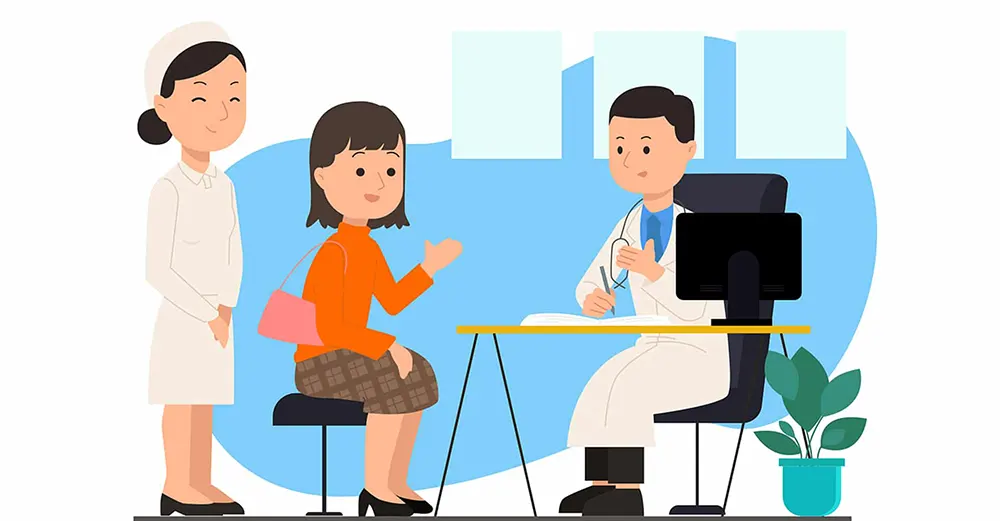A guide to using poster campaigns in public and private health services

A time-honored, tried-and-tested way to communicate health messages and promote positive health behaviors is by displaying public health posters. Doctors’ waiting rooms and hospital areas always have walls adorned with posters promoting healthy actions — such as getting vaccinated, healthy eating, taking exercise, quitting smoking, or going for a checkup — and there’s a good reason for it: they work.
Anyone with a responsibility for conveying health information to the public in a cost-saving, effective, and wide-reaching manner would do well to consider designing and printing posters. Several scientific studies show that they work well to convey knowledge, change attitudes, and influence behavior. Although, it’s important to note that they work only as part of a wider overall health promotion strategy. Health posters work best to pique interest, reinforce information given in other ways, and encourage further action.
Why is a poster good for health promotion?
Compared to other ways of giving the public information about health, diseases, and lifestyles, posters have a high impact and offer long-term gains. They may be general in nature — eat more fresh fruit and vegetables, for instance, or exercise for 30 minutes a day — or more specific, such as to go to a breast cancer screening or get your blood pressure checked. But whatever the focus or aim of a given campaign, there are many reasons why posters work well to promote public health:
- Well-designed posters are attractive and catch the attention
- Because they’re visual, they can convey the core message quickly to everyone, from children to adults, while lowering the barriers raised by differences in culture, language, education or literacy
- They can be seen by huge numbers of people and so they’re great for getting the word out, as well as representing a good return on investment
- Posters are a great way to drive traffic to other media such as a clinic website or health campaign social media page
- Good posters are memorable and may lead to immediate action or provoke action at a later date
- Well placed posters — for example in clinics, doctors’ waiting rooms, consultation suites, and hospitals — hit home to their target audience at a time when they are already thinking about health and so more likely to absorb health messages
How do I make a public health poster?
You’ll need to go through several steps to make a good public health poster and you’ll need a designer and a printer on board as early as possible in the campaign. But before you talk to designers and printers, you must think about the following areas:
- Information authority. In the age of the Internet — which promulgates proliferating anti-science ideologies, suspicion about the medical profession, and the spread of pseudo-science, quack medicine, disinformation, and conspiracy theories — this is a very important factor. How will you get people to trust the information or message you want to communicate? A poster isn’t the place for referencing scientific papers! How you show authority depends on your target audience. If they are older, educated people, referencing the CDC or other government body could be the way to go. If they are a young crowd, the best authority might come from a pop star or sports personalty. Alternatively, a personal testimony from ‘someone just like them’ — a single mother, a young professional, a retired couple — could lend the authority your message needs.
- What do you want to say? You must think carefully about what is essential in your message. You need to communicate through visual imagery and a few short phrases at most. You can’t write an essay on a poster! While you can convey a lot of information with a more complex visualization, such as an infographic, you still need to keep each component short, sweet, and unambiguous. The key to getting there is to have one thing to say and to know exactly what it is.
- The bigger picture. Posters work best when they’re part of a wider strategy of health promotion, so think about the bigger picture. At the launch of your campaign, you could, for example, hold a series of free events and workshops at your clinic, or link up with a local gym to offer ‘taster sessions’ in a number of fitness activities, or go into local schools to give talks.
- Who are you trying to reach? The best health promotions — and therefore, the best public health posters — target a specific segment of the population. Get as clear an idea as you can of who you want your poster to attract and speak to. What age are they? Do they belong to a particular cultural group? What are their hopes and concerns? Their hobbies and interests? Who do they admire? Who do they trust? The answers to these questions will help you to choose imagery, language, colors, and a style that will appeal to your specific target group.
- Call to action. The ‘call to action’ or CTA is a marketing concept, but one that is just as important and effective in public health. Public health posters may only be about informing people of facts, but in most cases, you want the viewer to do something in response. Make it explicit what it is and how they can do it. So, for example, “call the stop smoking helpline now for immediate help and advice”; or, “check our website or ask a member of staff about our screening programs”; or, “Scan the QR code to book your free health check today.”
A few helpful tips to help you design the best poster
1. Visible from a distance
Few will examine a poster close up if it isn’t both visible and clear from a distance. Whether it’s a movie style poster or a printed A4 (legal pad-sized) sheet, it must be easy to see and understand from the other side of a room or hall. Of course, there can be text and details which you need to get closer to see, but the poster’s message should be obvious from as far away as anyone who can see it might be.
2. Contrast captures attention
There’s a reason for color coordination, matching patterns, and subdued lighting in interior living room design. It’s because it creates a relaxing, homogeneous environment that doesn’t distract you from whatever you’re doing — reading, listening to music, watching the TV, enjoying a conversation, or having a quiet snooze. But your poster should do the opposite. You want people to sit up and take notice. So, use contrast to draw interest. Think about colors that spark attention, use a bold image and plenty of white space, arouse curiosity with a question, and use a large, clear font.
3. Think about where the poster will be displayed
If you’re designing posters to go up in your meadow green and pastel pink consultation waiting area, meadow green and pastel pink posters will be invisible. You need to design something eye-catching that will stand out. Likewise, poster dimensions matter. In a corridor, for example, or an entrance foyer, an A4 poster will barely be noticed. In an intimate clinic consultation room, a movie style poster would be distracting and intimidating. So, you need to think about where your posters will go and design them accordingly.
4. Talk to your printer
Talk to your printer! A good custom printing service will be able to help you every step of the way with advice about templates, paper choices, color schemes, finishes, and printing techniques to best support your public health poster campaign.
What now?
Before you go further, talk to us. Get in touch today for a no-obligation informal chat to talk through your needs and ideas. We have decades of experience in printing posters for all kinds of applications and our expert team would love to put that experience at your disposal to play our part in making your poster campaign a success.











